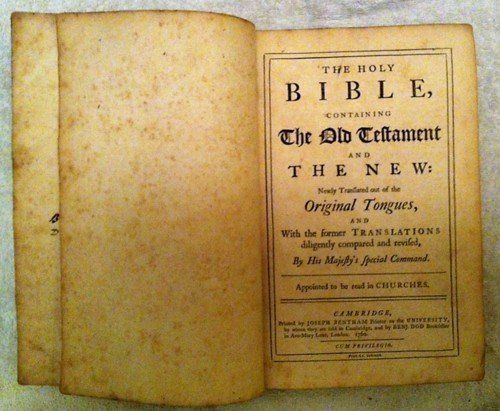The circumstances surrounding someone’s conversion to Christ may vary widely, but it seems to me that there are five elements common to all: conviction of sin; repentance; hearing (or reading) the gospel; the exercise of faith in the finished work of Christ; and a subsequent, evident change in lifestyle.
My own conversion occurred in 1973, when I was 29 years of age. I had at that time been married for five years. I had no religious convictions, nor any history of church attendance, except for a handful of visits to Sunday school as a child.
My career as an environmental health officer in local government was progressing reasonably well, albeit slowly, and my health had been good, until I was 28 years of age.
At that time, I developed a discomforting and at times painful bowel problem, which resulted in five weeks off work. After tests and some minor micro-surgery, my health returned, but I developed what I thought was a guilty conscience.
Several aspects of my life concerned me, so much so, that I genuinely resolved to ‘be a better person’. However, my repeated failures merely made my guilt complex worse.

God’s providence
About six months later, a very good friend and ex-work colleague contacted me. He and his wife were going away on holiday and he asked if my wife and I wanted to make use of their home in Chester, for a holiday ourselves. As both my wife and I are fond of Chester and nearby North Wales, we gladly accepted.
Part way through the holiday, we visited the historic Chester city centre and browsed in the network of shops known as the ‘Chester Rows’, parts of which date back to the 12th century. One of the shops we visited sold antiques.
As my wife browsed amongst the antiques, I noticed a very large, old Bible tucked away on a corner shelf. It turned out to be an Authorised Version of the Scriptures, with extensive marginal references and footnotes written by Rev. John Brown of Haddington, an 18th century minister of the Scottish Secession Church.
Up to this point, I had merely been killing time until my wife was ready to leave. The Bible had fallen open on a few pages between the Old Testament and New Testament, which the publishers had provided to record family details of the owner.
It had been filled in to record details of a young couple called Ephraim and Charlotte Miller, who had been married in the Presbyterian church at nearby Rockferry in 1882. The birthdays of their two daughters, born in 1883 and 1885, had also been entered. Sadly, it also recorded the death of Charlotte in 1887, aged just 28 years.
Having read this short family history, I found myself reading in the Gospel according to Matthew. I scan-read a portion of the text and then became fascinated by its extensive marginal referencing. I knew absolutely nothing about the Bible, but suddenly realised that in the Gospels we have four contemporary accounts of the life of Jesus.

God’s Book
In earlier years, I had studied history and realised the significance of corroborative contemporary accounts in authenticating historical acts. I had just read one of the four Gospel writers’ accounts of a particular incident in the life of Jesus, and was about to read how the other writers described the same event, when my wife, who was now ready to leave the shop, came up to me.
‘If you are so interested in that Bible, why not buy it?’, she suggested. To be honest I hadn’t been looking at it with a view to buying it, but nevertheless I asked the proprietor the price.
‘Well’, he said, ‘It is in poor condition’ (an understatement to say the least — the leather cover was largely reduced to powder and the front scarcely attached to the spine). ‘Give me £2 for it’.
So, I bought the Bible and took it back to our friend’s house, where we were staying. For much of the remainder of our holiday I studied the four Gospels, cynically looking for contradictions between one writer’s account of an event and that of another.
Of course, I found none; at least, none that couldn’t have had a rational explanation. But what I did find, as I read first through the Gospels and then the following epistles (letters), was the clear teaching that all men and women are sinners, justly condemned by God’s holy law.
I couldn’t argue with such a teaching. After all, my conscience had been telling me precisely the same for months. I came to realise, from the Scriptures, that the Holy Spirit convinces men and women of sin, bringing them into repentance and faith in Christ as their Saviour.
God’s Son
Jesus hadn’t just come into the world to set me a good example. He had come to act as my substitute, taking upon himself the punishment I deserved. As he himself put it: ‘Whosoever believes in me, shall not perish but have everlasting life’.
I saw the wonder of that promise in the account of the thief on the cross (Luke 23:39-43), who, having acknowledged that he deserved the punishment he was receiving, put his total trust in the Man Jesus dying alongside him, believing him to be the promised Messiah who had the power to take him to glory, despite his sin.
The thief never came down off the cross to mend his ways and live a righteous life, but what a gracious promise rewarded his faith. Jesus said to him, ‘Today thou shalt be with me in paradise’.
If I wasn’t convinced at that point of salvation by grace alone, through faith alone, I certainly was when I eventually read through the epistle to the Ephesians, where it says, ‘For by grace are ye saved through faith; and that not of yourselves: it is the gift of God. Not of works, lest any man should boast’.
When the time came for us to return home from our holiday, I remember leaving a note for my friend, saying that I thought I’d become a Christian; yes me, a rational human being who now realised that it was not illogical to believe that the Creator of all things could rise from the dead on the third day and make it possible for his people to be with him in glory.
God’s deliverance
God’s dealings with me were not restricted to convincing me of my sin and giving me faith to believe in his Son as my Saviour. Shortly after, through the agency of the same friend, God led me to a sound gospel ministry, at Stanton Lees Chapel, in Derbyshire, where I have been a member ever since.
O, by the way, I’m not the only sinner who God has dealt graciously with over the years in the buildings of which the antique shop was part. During the 17th century (I think), a Puritan family living over an adjacent shop were the only family in that street to be spared, when every other family suffered loss during an outbreak of the plague.
The father subsequently had carved in the timberwork of the front facade of the house ‘God’s providence is my inheritance’!
Chris Baxter



